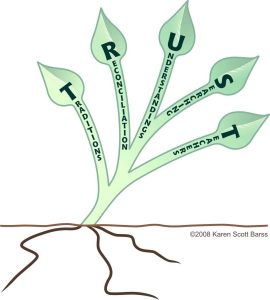Introduction
Welcome to this Open Educational Resource (OER), The Spiritual Dimension of Health Care.
Let’s begin with a brief description of this oft misunderstood yet integral aspect of health care and healing. The spiritual dimension is associated with ‘matters of the spirit’, as ultimately defined by each individual (Quinn, 2018; Scott Barss, Clarke, & McDonald, 2019). The subjective, diverse and intangible nature of this dimension calls for a beginning articulation of ‘the spiritual’ which can serve as a point of reference throughout health care. An interprofessional working group has described spirituality as “the aspect of humanity that refers to the way individuals seek and express meaning and purpose and the way they experience their connectedness to the moment, to self, to others, to nature, and to the significant or sacred” (Puchalski et al., 2009, p. 887). The spiritual dimension of health care, then, helps each person to actively draw upon personal convictions, values and resources to navigate adversity, meet their spiritual needs and mobilize their spiritual strengths (Ross, 2021; Scott Barss, 2020).
This ‘handbook for practice’ aims to …
… provide accessible, quick reference, evidence-based information that can support care providers and consumers to engage in self-selected practices that nurture the spiritual dimension of health in the context of holistic health and healing (whether giving and/or receiving care).
… introduce additional resources that may foster users’ ongoing learning and well-being.
… highlight Canadian resources, while drawing on relevant global literature.
… actively support individual and systemic change through the open sharing of inclusive information that supports such healing, growth, and evolution.
… provide a concise, comprehensive OER that can be adapted to a variety of contexts and locales, should users wish to do so for non-commercial purposes. (See Creative Commons License)
As such, resources in this handbook are open-access wherever possible, selected with careful discernment and intent to include the most supportive sources from the abundant interprofessional literature on spirituality and health. Attention has also been given to selecting inclusive resources that honour a diversity of worldviews and convictions, while also sharing a sampling of resources specific to particular ones. The hope is that users feel your own beliefs and practices are being fully honoured and that you feel supported in deepening the capacity to understand and honour the beliefs and practices of others.
To this end, users are encouraged to experience the book in a contemplative, reflective manner, discerning carefully what speaks to you most in a given time and place. You may wish to also explore and discuss the handbook’s content and resources with trusted others, particularly if you feel triggered by or experience a strong reaction to any of them. It is essential that each of us listens deeply to and honors ‘what comes up’ within, especially when exploring very personal topics like spirituality and/or navigating a tender or demanding time. In taking such measured approaches, our own and others’ wellness remains the priority and we can pace ourselves in embracing the opportunity to reflect and learn. Often, we can learn as much about our own questions, beliefs, values, assumptions and biases as we do about any new ideas and perspectives we are encountering. Furthermore, our own ‘gut reactions’ may alert us to the legitimate need for critical assessment of such information, helping us to remain safe and evidence-informed in our personal and professional health practices (Scott Barss, 2020).
This handbook’s exploration will be grounded by a resource the author developed in 2008 to aid in inclusive, non-intrusive exploration and care of the spiritual dimension of health: An Affirming Model for Inclusive Spiritual Care (Scott Barss 2012) . The image below provides an overview. The plant symbolizes the growth, healing, and renewed trust in life that can occur when we we have been cared for respectfully and holistically … body, mind, heart, and spirit … and in relationship to our families, friends, communities, and world (Scott Barss, 2012). Spiritual seekers can begin exploration on any topic (symbolized by each leaf) that they may wish.
*Note: In keeping with the intentions of inclusive spiritual care, you are encouraged to draw on your own/invite others’ personally meaningful imagery as an alternative or complement to imagery offered in ‘TRUST’.

Graphic Artist: Alexis Watt
For clarity, this handbook’s chapters will unfold in a linear fashion:
Chapter 1 – Spirituality and Health: An Overview
Chapter 2 – Traditions and Practices
Chapter 3 – Reconciliation
Chapter 4 – Understandings
Chapter 5 – Searching
Chapter 6 – Teachers
Chapter 7 – Closing Reflections
At the end of each chapter ‘Contemplation & Community’ reflections and activities are invited in support of holistic health promotion and restoration within oneself and/or others. Such engagement helps us to continually make connections between our ‘inner work’ and our ‘outer work’; each informs and supports the other as we endeavor to foster wellness and wholeness within our selves, families, communities, and world.
The following Appendices include quick reference information for ongoing use:
APPENDIX A: TRUST Quick Reference Guidelines
APPENDIX B: Resources for Health Care Providers
APPENDIX C: References and Resources
Whether you find helpful resources within this book and/or are prompted to seek out those more relevant to your current needs, circumstances and sources of strength … may this exploration nurture your own and others’ spirits, well-being, and practices (whether in your personal and/or professional life).

